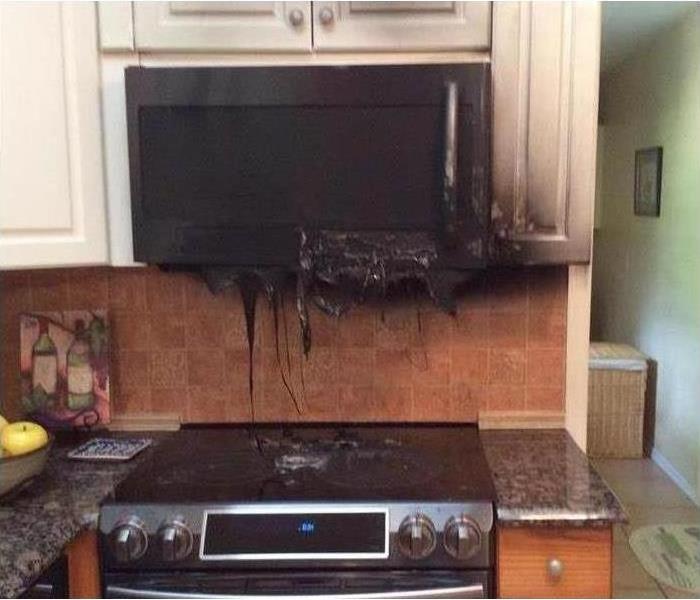Developing an Action Plan for Your Business
12/5/2022 (Permalink)
Developing an Action Plan for Your Business
Whether you're running a small family business or the CEO of a large corporation, you should be concerned about safety. Everyone has different needs when it comes to emergency plans and procedures; however, if you are looking for some guidance on how to put together an effective one here's what we suggest:
Identify the Fire Hazards
In the event of a fire, it's important to know what you're up against. To start, take stock of your business and its potential fire hazards: Does your office have flammable materials like paper, plastic, or cardboard? Is there a risk of an electrical fire? How about cooking oil in the kitchen? Are there any combustible gases that could explode if exposed to an open flame?
Next, look at where potential sources of fires may be located. Do they include furnaces and boilers in buildings shared with others? Do they include equipment such as air conditioning units or refrigerators that store flammable liquids or gases?
Finally—and perhaps most importantly—make sure you have the right safety equipment on hand. This includes fire extinguishers for small blazes; smoke detectors for high-risk areas like kitchens; carbon monoxide detectors for offices (especially those near heating systems); and other relevant devices such as sprinklers or carbon dioxide systems that could help prevent smaller outbreaks from becoming large-scale disasters
Identify Potential Victims
The next step is to identify who might be harmed and how. Who are the people in your business? What are their responsibilities? What are the risks to them, to your business, or both?
Who might be harmed by an emergency situation (or event) and how it may impact them depends on the nature of your business. It's important to think about all areas including:
- The physical environment--who is employed there and what tasks do they perform;
- Your employees--who are they, what do they look like, what do they sound like when talking on the phone;
- Your customers--who are they, where do they hang out online (for example), what kind of information do you collect from them; *The public--what kind of services do you offer (for example community outreach programs)?
Evaluate, Remove and Reduce the Risks
Next, you will want to evaluate, remove, and reduce the risks:
- Evaluate: Now that you've identified the risks, it's time to assess how likely they are to occur and what kind of impact they could have on your business.
- Remove: Once you've identified the risks, think about ways of removing them or reducing their impact. You may not be able to remove all of them, but every little bit helps.
- Reduce: Now for the fun stuff! How can you minimize or reduce the likelihood of these threats occurring? This might mean increasing employee training, installing smoke detectors in key areas, or even purchasing insurance policies (if available).
Test Your Plan
Once you have developed an emergency action plan for your business, it's important to test and review it on a regular basis. A well-tested and reviewed plan will help keep your business safe in the event of a disaster.
If there is any doubt about whether or not your plan still works, we recommend that you take the time to go through it with someone else who can give feedback and suggestions on how to improve it. This will help ensure that all areas have been covered, so nothing falls through the cracks in future disasters.
As well as looking at what has changed since you last tested or updated your plan (new staff members may require training or additional procedures), check whether any new areas need addressing - such as offsite storage facilities which now open up access points into the building. You should also look at any gaps which might exist between processes within departments - some things may overlap while others do not touch at all; this could lead to confusion during an actual emergency situation where time is precious!
Introduce the Plan
Explain why you are introducing the plan. You should explain to employees why it is important to have an emergency action plan, what will be covered in the plan, and how they can contribute to developing it. Share the EAP with staff as soon as possible. They should also be given an opportunity to give feedback on any parts of the EAP that they think need changing or improving before it is finalized and implemented.
In conclusion, developing an emergency action plan is not just a legal requirement but also an opportunity to think about what you could do in the event of a fire or other emergency. It’s important that everyone who works in your business understands their role and knows what actions they need to take if there is an emergency. By taking the time now to develop and test your plan, you can rest assured that it will work when needed most.
When an emergency does strike your Deltona North business, Give SERVPRO of Deltona North a call!
Resources: The HSC's website has lots of information on EAPs, including a template to use for your own plan. You can also download the list of emergency contact numbers from their site.






 24/7 Emergency Service
24/7 Emergency Service
